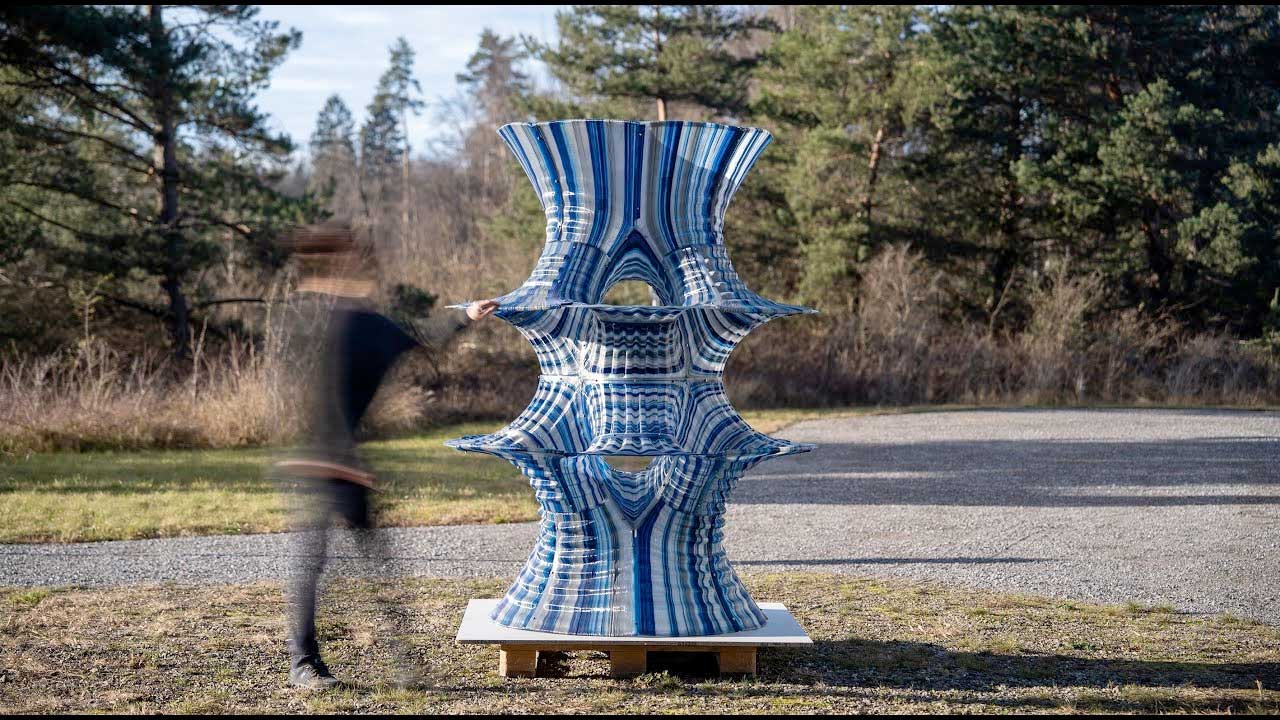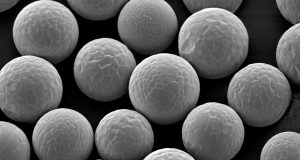The “Fluid Forms” project, which deals with the application possibilities of robotic manufacturing, presents an additive robotic manufacturing process that enables the printing of double-curved thin shells in a more efficient way.
“Fluid Forms” demonstrates the potential applications of robotic manufacturing. With a height of almost 2 meters, a lightweight shell is presented that was produced using an innovative robotic additive manufacturing process.
The design of “Fluid Forms” is inspired by the Costa minimal surface, which belongs to a family of forms that minimize the surface area for a given boundary, creating a geometry with improved structural properties. This is realized with pressure paths that are adapted to the main curvature directions of the shape.
The manufacturing process offers considerable advantages compared to planar printing: It reduces the need for support material, increases precision and improves surface quality in areas of high curvature. The orientation of the print path is controlled by a vector field optimization method that is fine-tuned for the specific needs and limitations of non-planar 3D printing. To increase the stiffness of the structure, waves are added that are orthogonal to the print direction. The prototype is assembled using a dry assembly method that allows for easy disassembly for recycling after the project’s lifetime.
In addition to improving production efficiency, the print paths reveal an inherent property of the underlying geometry, revealing a hidden layer of information. This creates a new aesthetic that celebrates the agility of robotic manufacturing. The form allows surprising glimpses as you walk around, at times acting as an opaque boundary and then again as a transparent curtain. It thus provides a glimpse of an architecture that blurs the boundaries between inside and outside and is full of color and surprises.
This project underlines the potential of 3D printing in architecture and offers new perspectives for the construction of large-scale, lightweight structures with unprecedented precision and material efficiency.
Subscribe to our Newsletter
3DPResso is a weekly newsletter that links to the most exciting global stories from the 3D printing and additive manufacturing industry.























